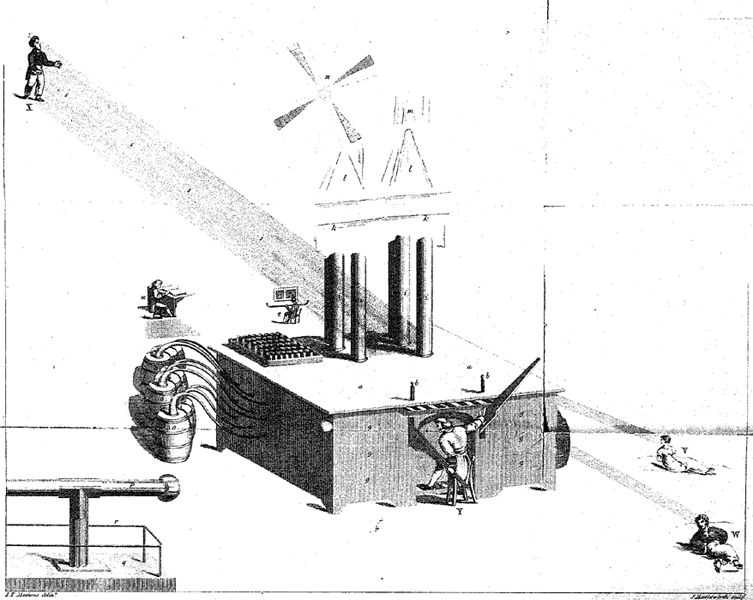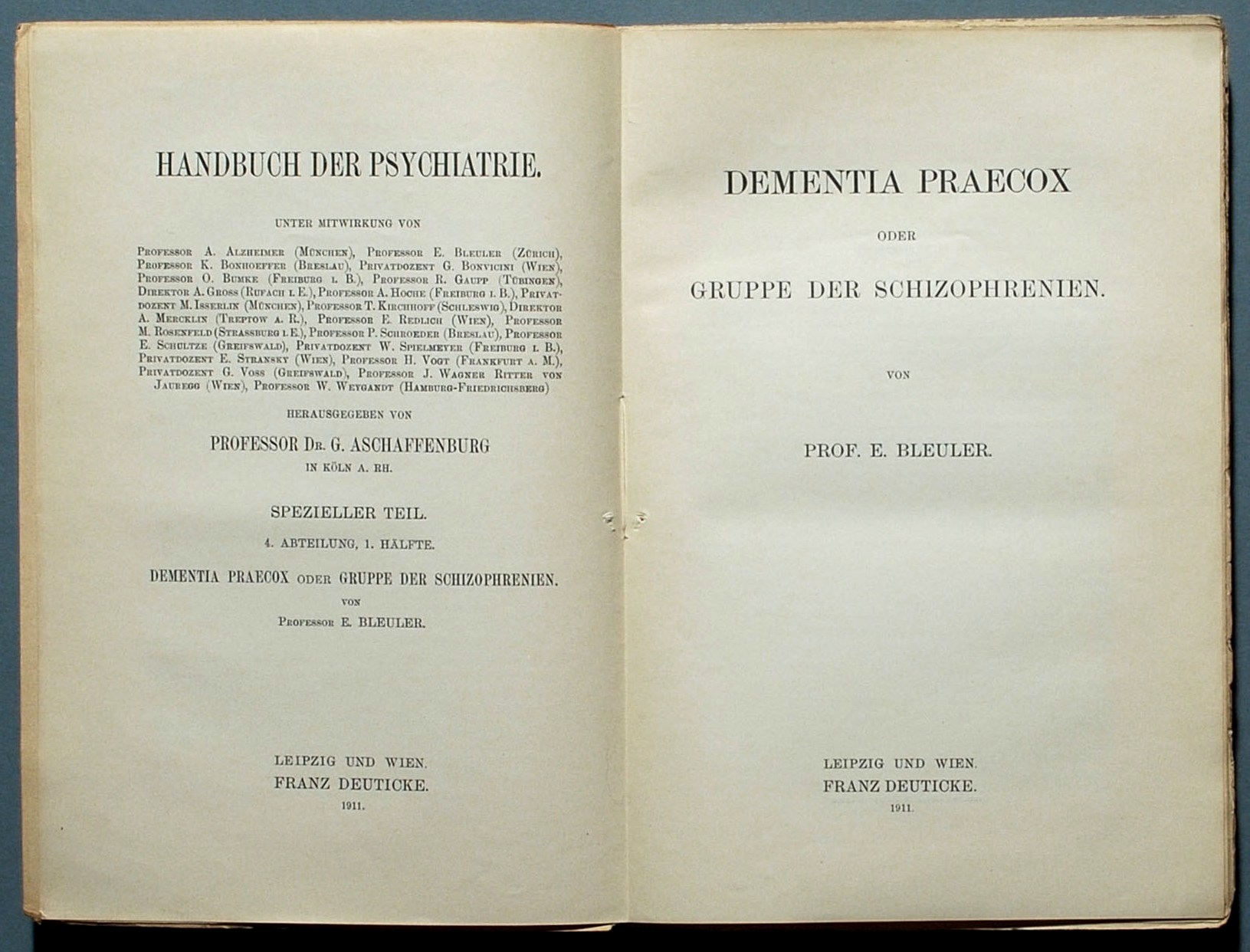|
Early Psychosis
Early intervention in psychosis is a clinical approach to those experiencing symptoms of psychosis for the first time. It forms part of a new prevention paradigm for psychiatry and is leading to reform of mental health services, especially in the United Kingdom and Australia. This approach centers on the early detection and treatment of early symptoms of psychosis during the formative years of the psychotic condition. The first three to five years are believed by some to be a critical period. The aim is to reduce the usual delays to treatment for those in their first episode of psychosis. The provision of optimal treatments in these early years is thought to prevent relapses and reduce the long-term impact of the condition. It is considered a secondary prevention strategy. The duration of untreated psychosis (DUP) has been shown as an indicator of prognosis, with a longer DUP associated with more long-term disability. Components of the model There are a number of functional ... [...More Info...] [...Related Items...] OR: [Wikipedia] [Google] [Baidu] |
Psychosis
Psychosis is a condition of the mind that results in difficulties determining what is real and what is not real. Symptoms may include delusions and hallucinations, among other features. Additional symptoms are incoherent speech and behavior that is inappropriate for a given situation. There may also be sleep problems, social withdrawal, lack of motivation, and difficulties carrying out daily activities. Psychosis can have serious adverse outcomes. As with many psychiatric phenomena, psychosis has several different causes. These include mental illness, such as schizophrenia or schizoaffective disorder, bipolar disorder, sensory deprivation and in rare cases, major depression (psychotic depression). Other causes include: trauma, sleep deprivation, some medical conditions, certain medications, and drugs such as cannabis, hallucinogens, and stimulants. One type, known as postpartum psychosis, can occur after giving birth. The neurotransmitter dopamine is believed to p ... [...More Info...] [...Related Items...] OR: [Wikipedia] [Google] [Baidu] |
European Psychiatric Association
The European Psychiatric Association (EPA) is the main association representing psychiatry in Europe. History The EPA was founded in October 1983 as the Association of European Psychiatrists (AEP), at the University of Strasbourg, by twelve French- and English-speaking university psychiatrists. The objective of the new organization was to "promote European Psychiatry in the fields of research, treatment and teaching, three axes considered to be unequivocally complementary." An inauguration symposium was held in May 1984. In 1989, the AEP was granted consultant status at the Council of Europe. In 2003, participatory status was gained. In 2008, the name was changed to the present one. Journal ''European Psychiatry'' is the association's official journal. European Brain Council The EPA is a member of the European Brain Council The European Brain Council (EBC) is a network of key players in the “Brain Area”, with a membership encompassing scientific societies, patient organisa ... [...More Info...] [...Related Items...] OR: [Wikipedia] [Google] [Baidu] |
Australia
Australia, officially the Commonwealth of Australia, is a Sovereign state, sovereign country comprising the mainland of the Australia (continent), Australian continent, the island of Tasmania, and numerous List of islands of Australia, smaller islands. With an area of , Australia is the largest country by area in Oceania and the world's List of countries and dependencies by area, sixth-largest country. Australia is the oldest, flattest, and driest inhabited continent, with the least fertile soils. It is a Megadiverse countries, megadiverse country, and its size gives it a wide variety of landscapes and climates, with Deserts of Australia, deserts in the centre, tropical Forests of Australia, rainforests in the north-east, and List of mountains in Australia, mountain ranges in the south-east. The ancestors of Aboriginal Australians began arriving from south east Asia approximately Early human migrations#Nearby Oceania, 65,000 years ago, during the Last Glacial Period, last i ... [...More Info...] [...Related Items...] OR: [Wikipedia] [Google] [Baidu] |
Hallucination
A hallucination is a perception in the absence of an external stimulus that has the qualities of a real perception. Hallucinations are vivid, substantial, and are perceived to be located in external objective space. Hallucination is a combination of 2 conscious states of brain wakefulness and REM sleep. They are distinguishable from several related phenomena, such as dreaming ( REM sleep), which does not involve wakefulness; pseudohallucination, which does not mimic real perception, and is accurately perceived as unreal; illusion, which involves distorted or misinterpreted real perception; and mental imagery, which does not mimic real perception, and is under voluntary control. Hallucinations also differ from "delusional perceptions", in which a correctly sensed and interpreted stimulus (i.e., a real perception) is given some additional significance. Many hallucinations happen also during sleep paralyses. Hallucinations can occur in any sensory modality—visual, auditory, olfa ... [...More Info...] [...Related Items...] OR: [Wikipedia] [Google] [Baidu] |
Delusion
A delusion is a false fixed belief that is not amenable to change in light of conflicting evidence. As a pathology, it is distinct from a belief based on false or incomplete information, confabulation, dogma, illusion, hallucination, or some other misleading effects of perception, as individuals with those beliefs ''are'' able to change or readjust their beliefs upon reviewing the evidence. However: "The distinction between a delusion and a strongly held idea is sometimes difficult to make and depends in part on the degree of conviction with which the belief is held despite clear or reasonable contradictory evidence regarding its veracity." Delusions have been found to occur in the context of many pathological states (both general physical and mental) and are of particular diagnostic importance in psychosis, psychotic disorders including schizophrenia, paraphrenia, Mania, manic episodes of bipolar disorder, and psychotic depression. Types Delusions are categorized into four d ... [...More Info...] [...Related Items...] OR: [Wikipedia] [Google] [Baidu] |
Cognitive Behavioural Therapy
Cognitive behavioral therapy (CBT) is a psycho-social intervention that aims to reduce symptoms of various mental health conditions, primarily depression and anxiety disorders. CBT focuses on challenging and changing cognitive distortions (such as thoughts, beliefs, and attitudes) and their associated behaviors to improve emotional regulation and develop personal coping strategies that target solving current problems. Though it was originally designed to treat depression, its uses have been expanded to include the treatment of many mental health conditions, including anxiety, substance use disorders, marital problems, and eating disorders. CBT includes a number of cognitive or behavioral psychotherapies that treat defined psychopathologies using evidence-based techniques and strategies. CBT is a common form of talk therapy based on the combination of the basic principles from behavioral and cognitive psychology. It is different from historical approaches to psychotherapy, ... [...More Info...] [...Related Items...] OR: [Wikipedia] [Google] [Baidu] |
Deinstitutionalisation
Deinstitutionalisation (or deinstitutionalization) is the process of replacing long-stay psychiatric hospitals with less isolated community mental health services for those diagnosed with a mental disorder or developmental disability. In the late 20th century, it led to the closure of many psychiatric hospitals, as patients were increasingly cared for at home, in halfway houses and clinics, in regular hospitals, or not at all. Deinstitutionalisation works in two ways. The first focuses on reducing the population size of mental institutions by releasing patients, shortening stays, and reducing both admissions and readmission rates. The second focuses on reforming psychiatric care to reduce (or avoid encouraging) feelings of dependency, hopelessness and other behaviors that make it hard for patients to adjust to a life outside of care. The modern deinstitutionalisation movement was made possible by the discovery of psychiatric drugs in the mid-20th century, which could manage psych ... [...More Info...] [...Related Items...] OR: [Wikipedia] [Google] [Baidu] |
Disease
A disease is a particular abnormal condition that negatively affects the structure or function of all or part of an organism, and that is not immediately due to any external injury. Diseases are often known to be medical conditions that are associated with specific signs and symptoms. A disease may be caused by external factors such as pathogens or by internal dysfunctions. For example, internal dysfunctions of the immune system can produce a variety of different diseases, including various forms of immunodeficiency, hypersensitivity, allergies and autoimmune disorders. In humans, ''disease'' is often used more broadly to refer to any condition that causes pain, dysfunction, distress, social problems, or death to the person affected, or similar problems for those in contact with the person. In this broader sense, it sometimes includes injuries, disabilities, disorders, syndromes, infections, isolated symptoms, deviant behaviors, and atypical variations of structur ... [...More Info...] [...Related Items...] OR: [Wikipedia] [Google] [Baidu] |
Schizotypy
In psychology, schizotypy is a theoretical concept that posits a continuum of personality characteristics and experiences, ranging from normal dissociative, imaginative states to extreme states of mind related to psychosis, especially schizophrenia. The continuum of personality proposed in schizotypy is in contrast to a categorical view of psychosis, wherein psychosis is considered a particular (usually pathological) state of mind, which the person either has or does not have. Development of the concept The categorical view of psychosis is most associated with Emil Kraepelin, who created criteria for the medical diagnosis and classification of different forms of psychotic illness. Particularly, he made the distinction between dementia praecox (now called schizophrenia), manic depressive insanity and non-psychotic states. Modern diagnostic systems used in psychiatry (such as the DSM) maintain this categorical view. In contrast, psychiatrist Eugen Bleuler did not believe there was ... [...More Info...] [...Related Items...] OR: [Wikipedia] [Google] [Baidu] |
Diathesis–stress Model
The diathesis-stress model, also known as the vulnerability–stress model, is a psychological theory that attempts to explain a disorder, or its trajectory, as the result of an interaction between a predispositional vulnerability, the diathesis, and stress caused by life experiences. The term diathesis derives from the Greek term (διάθεσις) for a predisposition or sensibility. A diathesis can take the form of genetic, psychological, biological, or situational factors.Ingram, R. E. & Luxton, D. D. (2005). "Vulnerability-Stress Models." In B.L. Hankin & J. R. Z. Abela (Eds.), Development of Psychopathology: A vulnerability stress perspective' (pp. 32-46). Thousand Oaks, CA: Sage Publications Inc. A large range of differences exists among individuals' vulnerabilities to the development of a disorder. The diathesis, or predisposition, interacts with the individual's subsequent stress response. Stress is a life event or series of events that disrupt a person's psychological eq ... [...More Info...] [...Related Items...] OR: [Wikipedia] [Google] [Baidu] |
Dementia Praecox
Dementia praecox (meaning a "premature dementia" or "precocious madness") is a disused psychiatric diagnosis that originally designated a chronic, deteriorating psychotic disorder characterized by rapid cognitive disintegration, usually beginning in the late teens or early adulthood. Over the years, the term ''dementia praecox'' was gradually replaced by ''schizophrenia'', which remains in current diagnostic use. The term ''dementia praecox'' was first used in 1891 by Arnold Pick (1851–1924), a professor of psychiatry at Charles University in Prague. In a brief clinical report, he described a person with a psychotic disorder resembling "hebephrenia" (schizophrenia). German psychiatrist Emil Kraepelin (1856–1926) popularised the term ''dementia praecox'' in his first detailed textbook descriptions of a condition that eventually became a different disease concept later relabeled as ''schizophrenia''. Kraepelin reduced the complex psychiatric taxonomies of the nineteenth centur ... [...More Info...] [...Related Items...] OR: [Wikipedia] [Google] [Baidu] |
Emil Kraepelin
Emil Wilhelm Georg Magnus Kraepelin (; ; 15 February 1856 – 7 October 1926) was a German psychiatrist. H. J. Eysenck's ''Encyclopedia of Psychology'' identifies him as the founder of modern scientific psychiatry, psychopharmacology and psychiatric genetics. Kraepelin believed the chief origin of psychiatric disease to be biological and genetic malfunction. His theories dominated psychiatry at the start of the 20th century and, despite the later psychodynamic influence of Sigmund Freud and his disciples, enjoyed a revival at century's end. While he proclaimed his own high clinical standards of gathering information "by means of expert analysis of individual cases", he also drew on reported observations of officials not trained in psychiatry. His textbooks do not contain detailed case histories of individuals but mosaic-like compilations of typical statements and behaviors from patients with a specific diagnosis. He has been described as "a scientific manager" and "a politi ... [...More Info...] [...Related Items...] OR: [Wikipedia] [Google] [Baidu] |




